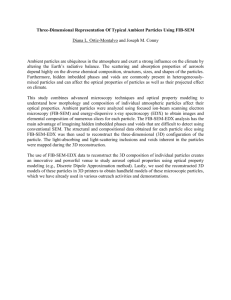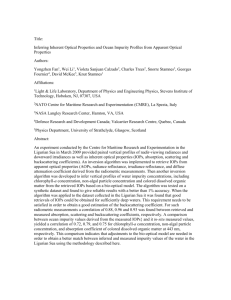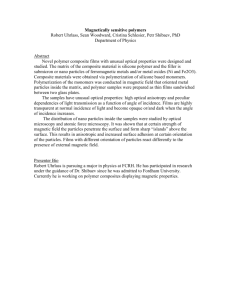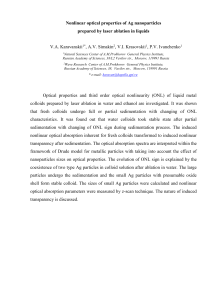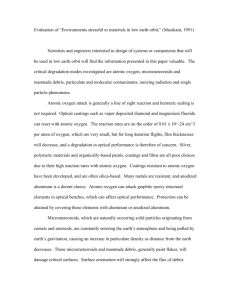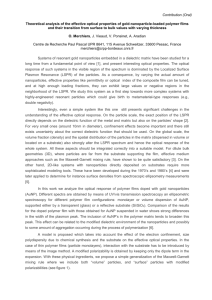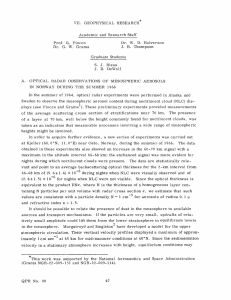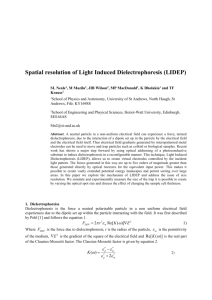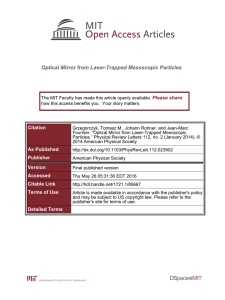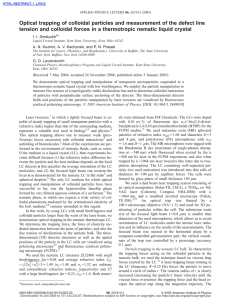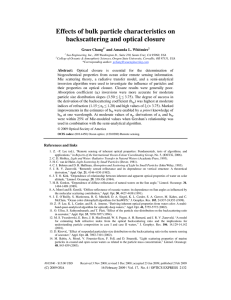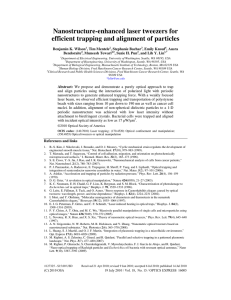Single-Particle Optics Approach in Studying Inherent Optical
advertisement
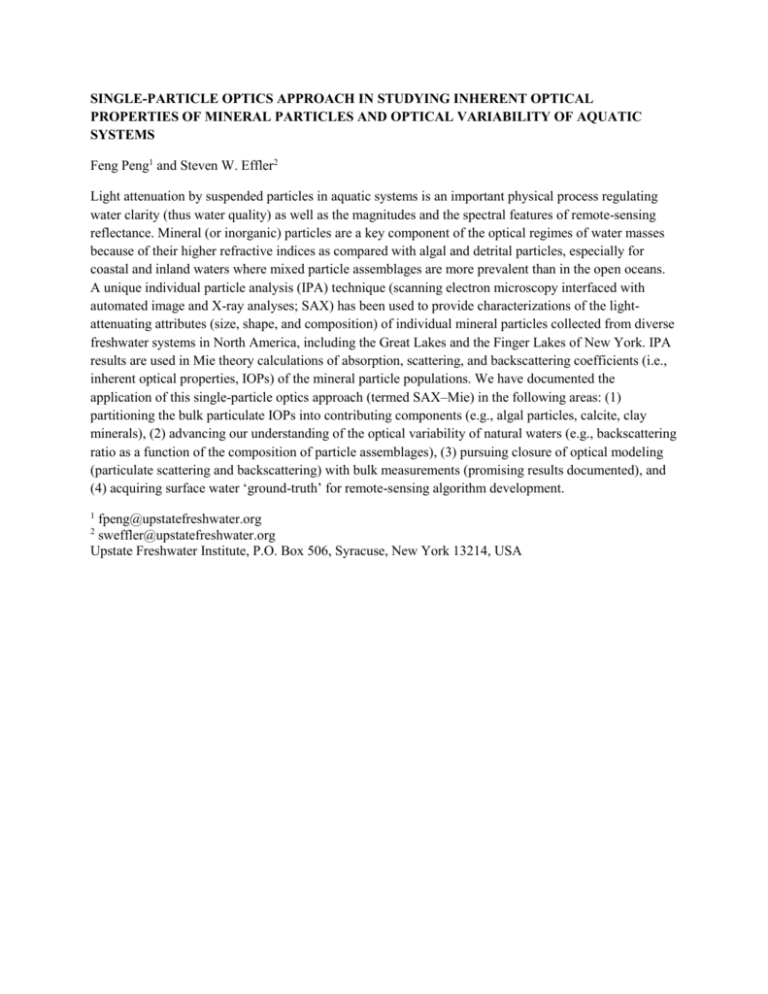
SINGLE-PARTICLE OPTICS APPROACH IN STUDYING INHERENT OPTICAL PROPERTIES OF MINERAL PARTICLES AND OPTICAL VARIABILITY OF AQUATIC SYSTEMS Feng Peng1 and Steven W. Effler2 Light attenuation by suspended particles in aquatic systems is an important physical process regulating water clarity (thus water quality) as well as the magnitudes and the spectral features of remote-sensing reflectance. Mineral (or inorganic) particles are a key component of the optical regimes of water masses because of their higher refractive indices as compared with algal and detrital particles, especially for coastal and inland waters where mixed particle assemblages are more prevalent than in the open oceans. A unique individual particle analysis (IPA) technique (scanning electron microscopy interfaced with automated image and X-ray analyses; SAX) has been used to provide characterizations of the lightattenuating attributes (size, shape, and composition) of individual mineral particles collected from diverse freshwater systems in North America, including the Great Lakes and the Finger Lakes of New York. IPA results are used in Mie theory calculations of absorption, scattering, and backscattering coefficients (i.e., inherent optical properties, IOPs) of the mineral particle populations. We have documented the application of this single-particle optics approach (termed SAX–Mie) in the following areas: (1) partitioning the bulk particulate IOPs into contributing components (e.g., algal particles, calcite, clay minerals), (2) advancing our understanding of the optical variability of natural waters (e.g., backscattering ratio as a function of the composition of particle assemblages), (3) pursuing closure of optical modeling (particulate scattering and backscattering) with bulk measurements (promising results documented), and (4) acquiring surface water ‘ground-truth’ for remote-sensing algorithm development. 1 fpeng@upstatefreshwater.org sweffler@upstatefreshwater.org Upstate Freshwater Institute, P.O. Box 506, Syracuse, New York 13214, USA 2


